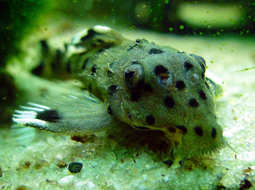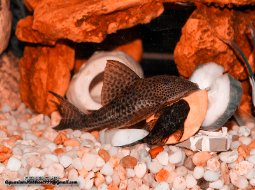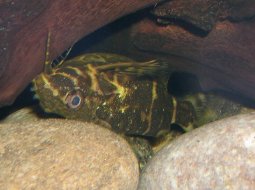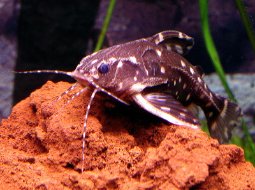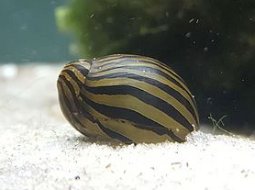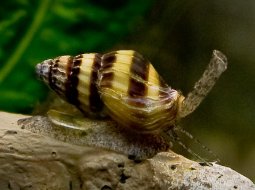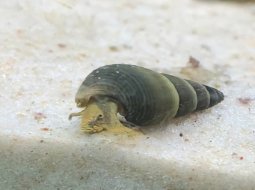
Loading Aqualapp ...
Care and Compatibility of Jaguar Cichlid - Parachromis managuensis
Introduction
The Parachromis managuensis, also known as the Jaguar Cichlid, is a large-sized cichlid native to Central America. This fish is recognized for its imposing appearance and highly aggressive nature. Its body is elongated and laterally compressed, with coloration that varies depending on its emotional state and environment. Younger individuals may have spots and patterns, but as they mature, their color generally becomes darker and more solid. They are popular among enthusiasts of larger and more aggressive cichlids, although keeping them in captivity can be quite challenging due to their territorial and aggressive behavior.
Behavior
The Parachromis managuensis, also known as the Jaguar Cichlid, is a cichlid fish native to Central America, particularly from the Managua River basin and other river systems in the region. They are highly aggressive and territorial fish, making them unsuitable for community aquariums. These cichlids are known for their predatory behavior and their ability to grow to considerable sizes. They require a large and spacious aquarium with hiding places and shelters, as they are prone to establishing territories in the tank. They are carnivorous and primarily feed on smaller fish and other live foods. Their aggression and size require experienced handling and a properly prepared aquarium.
Sexual Dimorphism
Sexual dimorphism in Parachromis managuensis is minimal but present. Males are typically larger and have more intense colors, especially during breeding season.
Reproduction
Breeding Parachromis managuensis in captivity can be challenging due to their aggressive and territorial nature. To encourage breeding, a large and spacious aquarium with multiple hiding places and shelters is necessary. The pair will form a bond during the courtship process and then select a spawning site, usually a flat surface or a pit excavated in the substrate. After spawning, both the male and female will care for and protect the eggs and fry. The fry can be fed with enriched live foods, and as they grow, larger foods can be introduced into their diet.
Aquarium Conditions
Parachromis managuensis, commonly known as the jaguar cichlid, requires a spacious aquarium with plenty of room to swim and hide. It prefers warm and slightly alkaline water. Aquarium décor should include rocks, driftwood, and caves. Maintaining water quality is crucial and providing a varied diet.
Feeding
The Parachromis managuensis is a voracious carnivore and predator by nature. In the wild, its diet mainly consists of smaller fish, crustaceans, and aquatic insects. In the aquarium, they will accept live foods such as small fish, shrimps, and insect larvae. They can also be fed with frozen foods, and in some cases, high-quality dry foods designed for carnivorous cichlids. Providing them with a varied and nutritious diet is recommended to maintain their health and vitality.
Complexity
Caring for Parachromis managuensis can be challenging. They are aggressive and territorial fish, especially during breeding season. It's recommended to keep them in a species-only tank or with robust, similarly sized companions. They are carnivorous and accept a variety of foods, including live and frozen foods.
In case you need more help, or if you want to know into any topic related to the Parachromis managuensis (Jaguar Cichlid) and even any other species you can use the forums to ask what you need.
To do an analysis more detailed about coexistence and behavior of Parachromis managuensis (Jaguar Cichlid) use the Aquarium simulation tool, if you do this you can test different ways to combine the Jaguar Cichlid with other fishes giving the dimensions and space on you aquarium, on this way you can known the optimal configuration for keep the fishes that you want.
You can also find out the 18 species compatible with the Parachromis managuensis (Jaguar Cichlid) can live together.
Note: The parameters of the water such as PH and temperature are also used to calculate the compatibility of the species.
Compatible species (18)
Compatible (11 Species)
Compatible without any restriction
With Reservation (7 Species)
Las especies territoriales por lo general pueden convivir con especies protegidas con coraza, ya que no pueden hacerles daño por su dura piel, lo que si hay que tener en cuenta es tener un acuario con dimensiones favorables para que cada pez pueda delimitar un territorio, ya que la mayoría de peces acorazados son también peces de fondo y les gusta estar buscando lugares donde ocultarse.
Compatible in some cases, it depends on the nature and personality of the fish.
Jaguar Cichlid
Parachromis managuensis

- Ph: 6.5 - 7.5
- Temperature (c°): 22 - 30
- Measures: 25 cm - 35cm
- Aquarium Capacity:
245 Liters - 65 Gallons - Alimentación: Carnivores
- Colores: Black, Silver, Yellow
- Comportamiento: Aggressive, Territorial
- Habitad: American
- Preferencias del Acuario: Caves, Rocks
- Tamaño: Big
- Taxonomía: Cichlids, Fish
- Tipo de Agua: Sweet water, Tropical waters
- Velocidad de nado o movimiento: Normal
- Zona de Nado: Aquarium background

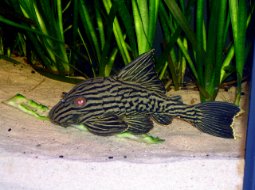
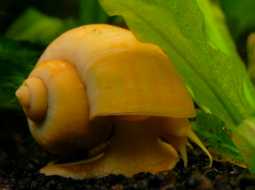
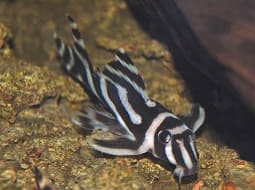
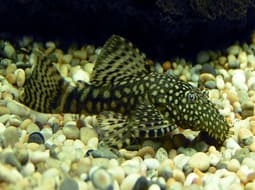

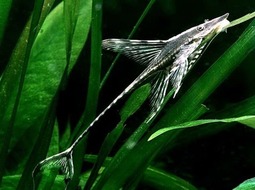

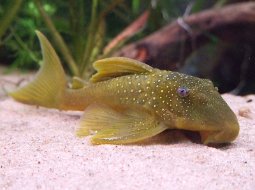
.jpg)
